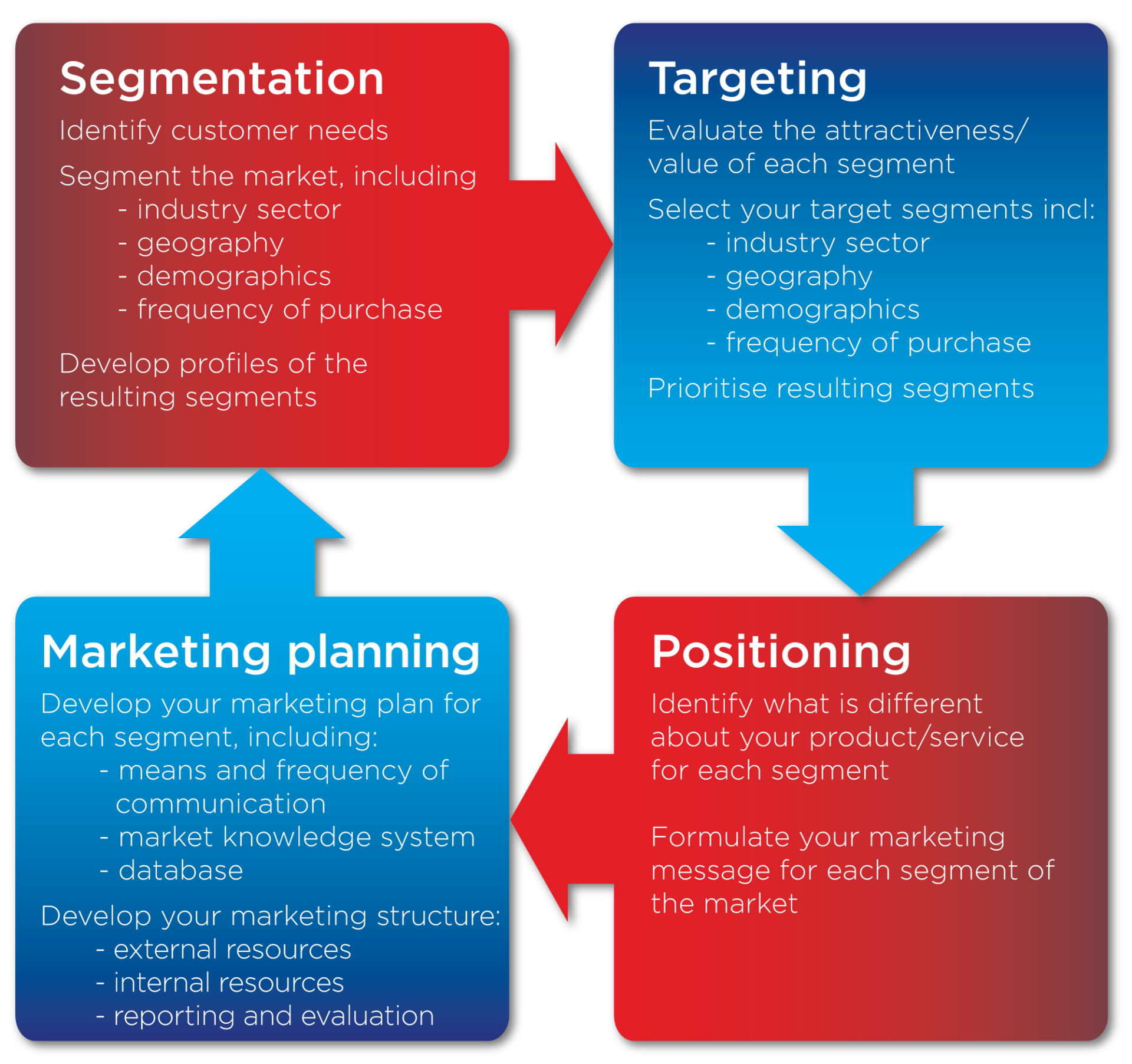Segmentation, Targeting and Positioning
Segmentation, Targeting and Positioning may sound like marketing jargon but it is about understanding who your customers are, how they make their decisions, who makes the decision to purchase, and how to best answer their needs. This is important to break up your potential customer base which enables you to give focus to your marketing efforts. You can then target particular industry sectors, locations, with messages that are more tailored to their needs and so improve interest and convert them to want to buy your product or service.

Segmentation
Identify customer needs
Segment the market, including:
- industry sector
- geography
- demographics
- frequency of purchase
Develop profiles of the resulting segments
Targeting
Evaluate the attrativeness / value of each segment
Select your taget segments including:
- industry sector
- geography
- demographics
- frequency of purchase
Prioritise resulting segments
Positioning
Identify what is different about your product / service for each segment
Formulate your marketing message for each segment of the market
Marketing planning
Develop your marketing plan for each segment, including:
- means and frequency of communication
- market knowledge system
- database
Develop your marketing structure:
- external resources
- internal resources
- reporting and evaluation

Segmentation is about building a profile of who your customers are, where they are geographically, who are the decision makers, how often do they purchase. Identifying the benefits to your customers of your products or service as oppose to selling them the latest gadget, think about what problem are you solving?

Targeting, having identified who your customers are, you need to look at the attractiveness of each segment to start and establish priorities. Some of the factors to consider include market size, is it a growing or declining market, profitability, your market share, your competitors activity and strength; your route to market ie through a distributor or agent, selling direct, your existing order base and capacity. If you are already busy can you get resource onboard to cope with increased orders or do you need to train people up in advance.

Positioning, having looked outwards from your company at the marketplace you operate in and your competitors you now need to look at your product or service offering. Keep in mind what does your competitor offer and what problem for your customer is it that you are solving. If you have established different segments of your overall customer base they may well have different needs so may need a different marketing message or service offer.
